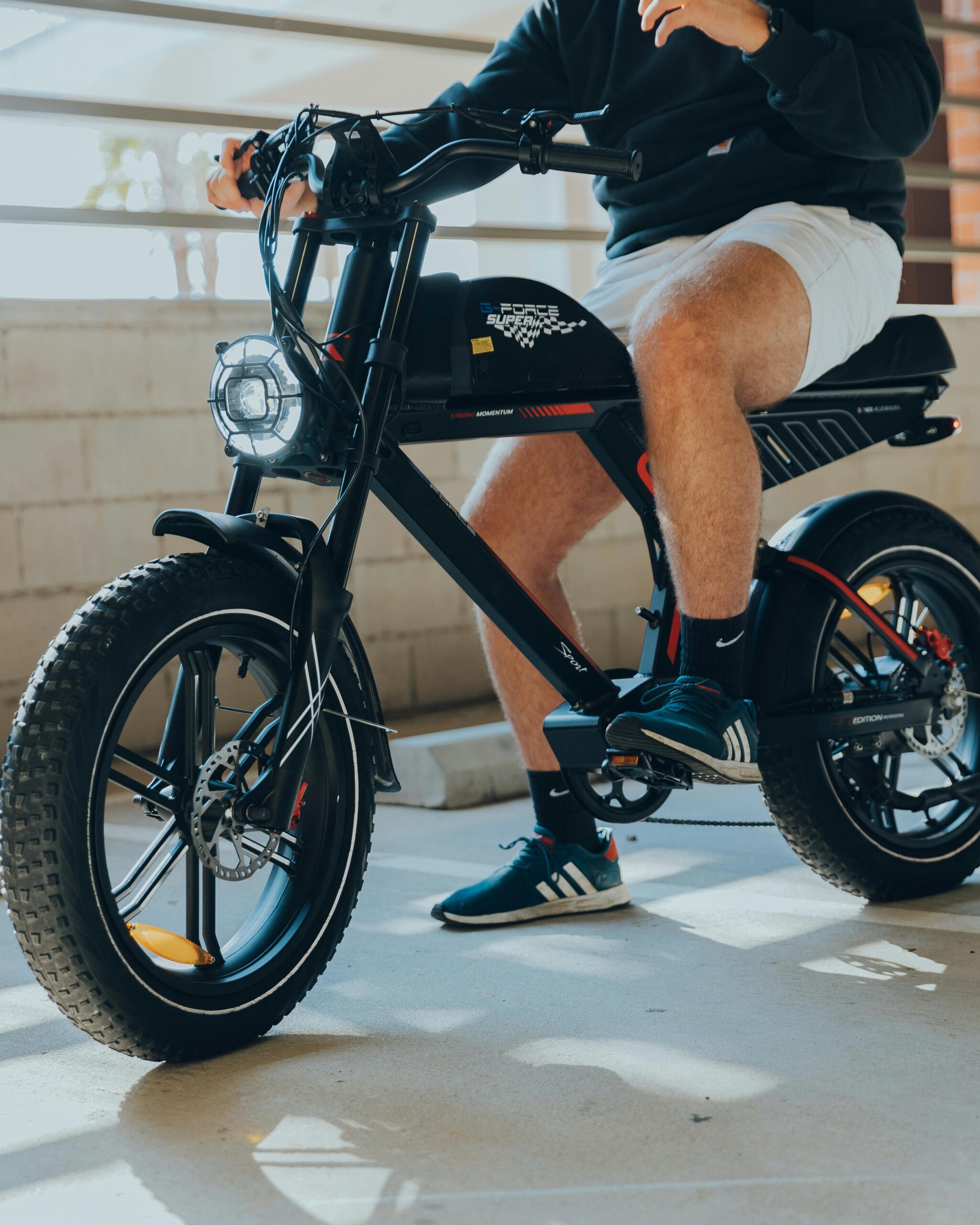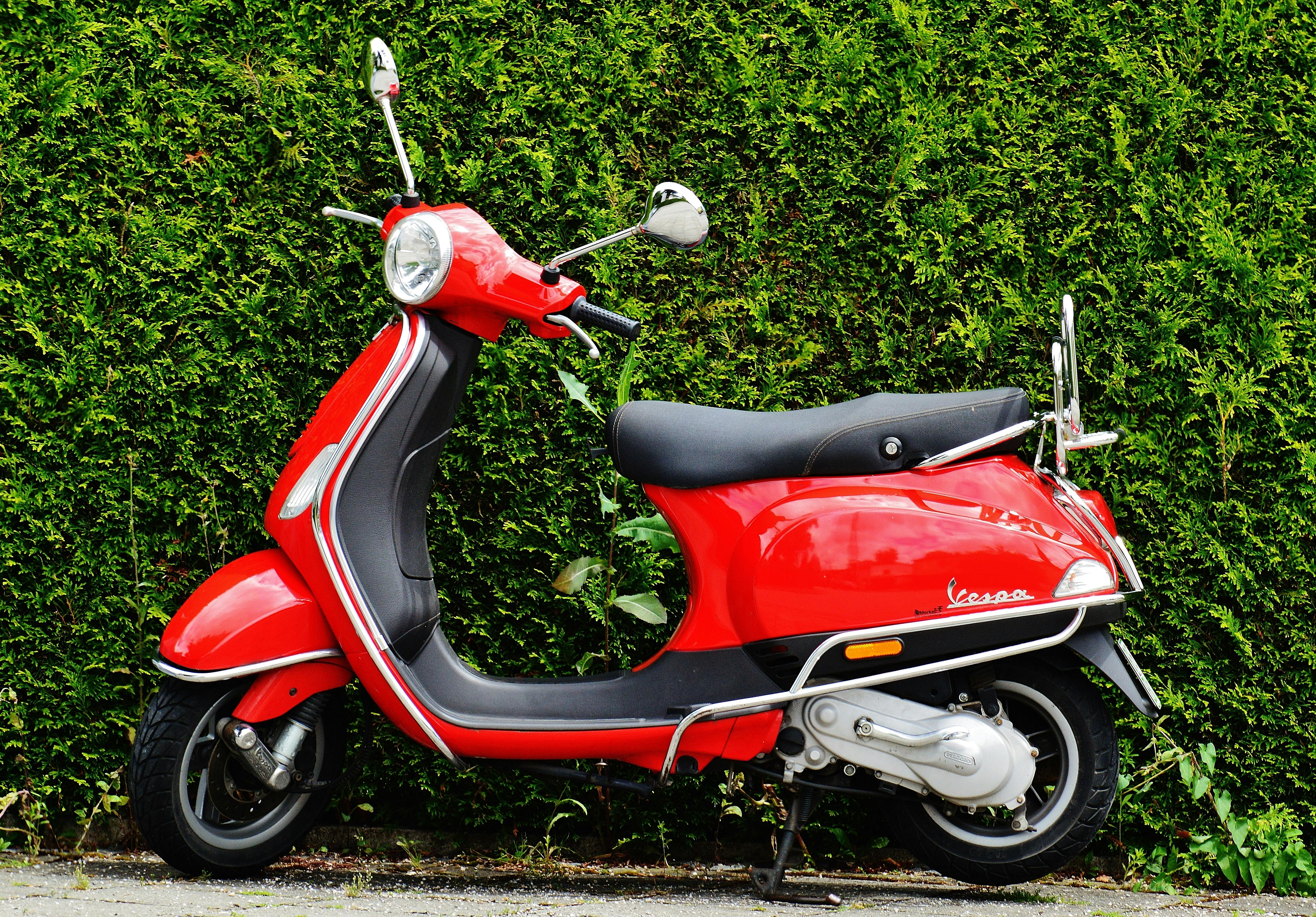
Your mobility scooter is a finely tuned machine, but its performance, comfort, and safety all hinge on four small patches of rubber. We often overlook tires, treating them as a simple part, but they are the critical connection between you and the ground. Choosing the wrong ones can turn a smooth ride into a bumpy, jarring experience, or worse, leave you stranded with a flat. You deserve confidence in every journey, whether it’s a quick trip to the grocery store in Chicago or a scenic ride along the seawall in Vancouver. This guide demystifies the world of scooter tires, using a simple analogy to transform you from a confused buyer into a confident expert. Let’s find the perfect fit for your lifestyle and ensure your scooter is always ready to roll.

This Photo was taken by Pixabay.
Decoding the types: finding your perfect “sole”
Thinking about scooter tires can feel overly technical. To simplify it, let’s compare them to something we all understand: shoes. You wouldn’t wear dress shoes for a marathon, and you wouldn’t wear hiking boots to a formal dinner. The same logic applies to your scooter’s tires. Each type is designed for a specific purpose.
Solid tires: the dependable dress shoe
Just like a sturdy pair of leather dress shoes, solid tires are all about reliability and low maintenance. Made from solid polyurethane rubber, they are completely puncture-proof. You never have to worry about checking air pressure or carrying a patch kit. This makes them ideal for indoor use in malls, convention centers, and navigating smooth, paved surfaces where sharp debris is not a primary concern. However, their rigidity means they offer the least amount of cushioning, so you’ll feel more of the bumps and cracks in the sidewalk.
- Best for: Primarily indoor use, smooth pavements, users who prioritize zero maintenance.
- Think: Shopping malls, apartment building hallways, paved urban centers.
Pneumatic tires: the cushioned running shoe
Pneumatic, or air-filled, tires are the running shoes of the scooter world. They provide superior cushioning, absorbing shocks and vibrations from uneven surfaces to deliver the smoothest, most comfortable ride possible. Their flexible nature also allows for better traction on a variety of terrains, from grass to gravel. This comfort comes with a trade-off: they require regular air pressure checks and are susceptible to flats. According to a 2024 report from the National Highway Traffic Safety Administration (NHTSA) on micro-mobility, properly inflated tires are a key factor in vehicle stability and safety. For outdoor adventurers and those who prioritize comfort above all, pneumatics are often the top choice.
- Best for: Outdoor use, varied terrain, users seeking maximum comfort.
- Think: Park paths, suburban neighborhoods, light trails.
Foam-filled tires: the versatile cross-trainer
What if you want the best of both worlds? Enter foam-filled tires, the cross-trainers in our shoe analogy. These tires have a rubber outer shell like a pneumatic tire but are filled with a dense foam insert instead of air. This design provides a cushioned ride that is significantly better than solid tires while being completely flat-proof. They offer a fantastic, worry-free solution for users who split their time between indoors and outdoors. While they are typically heavier and a bit more expensive, the peace of mind they offer is invaluable. They represent a perfect balance of comfort and reliability.
- Best for: All-around use, users who want comfort without the risk of flats.
- Think: A mix of sidewalks, stores, and community paths.

This Photo was taken by Simeon Stoilov.
Matching your tread to your trail: a US and Canada perspective
The vast and varied landscapes of the USA and Canada present unique challenges and opportunities for mobility scooter users. Your local environment plays a huge role in determining the ideal tire. Someone navigating the flat, sunny sidewalks of Miami has different needs than someone exploring the occasionally bumpy pathways of Calgary.
For those who venture off the beaten path, matching your scooter to the terrain is crucial. If you find yourself frequently wishing for more grip or a sturdier ride, it may be time to look into the best all-terrain mobility scooters available. These models often come equipped with robust pneumatic or foam-filled tires designed for adventure.

330lbs Max Weight, Electric Mobility Scooter for Adults 4 Wheel Mobility, 20miles Per Charge Electric Powered Wheelchair Power Scooters Red
Price: $649.99 | Rating: 4,7
This scooter provides a solid balance of range and weight capacity, making it a reliable choice for daily errands. Its four-wheel design offers excellent stability on paved surfaces.
Cons: May not have the suspension needed for very rough terrain.
Tire comparison for North American climates
Here’s a quick-reference table to help you decide. Market analysis from sources like Mordor Intelligence projects continued growth in the mobility scooter market through 2025, with an increasing demand for durable and adaptable components like tires.
| Feature | Solid Tires | Pneumatic Tires | Foam-Filled Tires |
|---|---|---|---|
| Ride Comfort | Low | High | Medium-High |
| Maintenance | None | High (Air Pressure) | None |
| Puncture Risk | None | High | None |
| Best Terrain | Smooth Indoors | Varied Outdoors | Mixed Use |
| Cost | $ | $$ | $$$ |

This Photo was taken by G-FORCE Bike.
Reading the signs: when to replace your tires
Just like the tires on a car, your scooter’s tires will wear out over time. Ignoring the warning signs is a risk you don’t want to take. Proper tire maintenance is one of the most important aspects of scooter ownership. For more information, read our guide on essential mobility scooter safety tips.
The tread depth test
The easiest way to check your tread is with a penny (for Americans) or a nickel (for Canadians). Insert the coin into the tread groove with the monarch’s head upside down. If you can see the top of Lincoln’s head or the Queen’s crown, your tread is dangerously low, and it’s time for a replacement. Worn tread significantly reduces traction, especially on wet surfaces.

Metro Electric Mobility Scooters for Adults and Seniors – 300 lbs Max Weight, 4-Wheel Powered Mobility Scooters,Folding Mobility Scooter Lightweight for Travel, Elderly (with Head Light-Yellow)
Price: $799.99 | Rating:
A great option for travel and everyday use, this scooter’s folding design and lightweight frame make it easy to transport. The included headlight enhances visibility for evening rides.
Cons: As a lightweight model, it may have a shorter range than heavy-duty scooters.
Cracks and bulges
Inspect the sidewalls of your tires regularly. Over time, exposure to sun and temperature changes can cause the rubber to become brittle and develop cracks. Any visible cracks, bubbles, or bulges are serious red flags indicating the tire’s structural integrity is compromised. Replace these tires immediately.

This Photo was taken by Ron Lach.
Performance changes
You know your scooter best. If you start to feel a persistent wobble, notice the scooter pulling to one side, or feel a general loss of stability, your tires are a likely culprit. An unevenly worn tire can throw off the balance of your entire machine. Don’t ignore these subtle feelings; they are often the first sign that it’s time for a new set.

Powered Mobility Scooter for Adults, Seniors – 23MI Extra Long Range Foldable 4 Wheel Electric Motorized Scooter for Travels with Airport Approved Dual Batteries, All Terrain Motorized Scooter (Red)
Price: $999.00 | Rating: 4,9
This model is built for travelers, featuring an impressive 23-mile range and dual airport-approved batteries. Its all-terrain capabilities make it versatile for various destinations.
Cons: Higher price point reflects its premium travel features.
Frequently asked questions about mobility scooter tires
Here are answers to some of the most common questions we receive from scooter owners across the USA and Canada.
How do I find my tire size?
Your tire size is almost always printed directly on the sidewall of the tire itself. Look for a series of numbers, such as “200×50” or “4.10/3.50-4”. The first number usually refers to the tire’s height or diameter, and the second refers to its width. If you can’t find it, consult your scooter’s owner’s manual or contact the manufacturer.
Can I install new tires myself?
For handy individuals, replacing tires at home is possible, especially with solid tires. However, pneumatic and foam-filled tires often require specialized tools to mount them on the rim without causing damage. For safety and peace of mind, we recommend having a qualified technician at a mobility equipment dealer perform the installation.
Do I need to replace all my tires at once?
It’s highly recommended. Even if only one tire is visibly worn, the others have experienced the same mileage and wear. Replacing them as a set ensures balanced performance, stability, and handling. Mismatched tires can lead to an unstable ride and uneven wear on your new tire.
Can I upgrade my scooter from solid to pneumatic tires?
In many cases, yes. Most scooters are designed to accommodate different tire types as long as the size is correct. This is a popular upgrade for users who buy a scooter with standard solid tires and later decide they want a more comfortable ride. You can find options in our ultimate guide to scooter accessories and parts. Just be sure the new wheel assembly will fit your scooter’s axle.
Where can I find replacement tires?
You can purchase replacement tires from your original scooter dealer, specialized online mobility stores, or large online marketplaces. Always ensure you are buying from a reputable seller to guarantee quality and safety. The Christopher & Dana Reeve Foundation provides resources that can help locate trusted medical equipment suppliers in your area.

This Photo was taken by Kamer Değirmenci.
Your foundation for a confident ride
Your mobility scooter tires are far more than just rubber rings; they are the foundation of your mobility, freedom, and daily confidence. Just as the right pair of shoes can make or break an outing, the right tires transform your scooter’s performance and your comfort. By thinking of them as dress shoes (solid), running shoes (pneumatic), or cross-trainers (foam-filled), you can cut through the technical jargon and make a choice that truly fits your life. You now have the knowledge to assess your needs, read the signs of wear, and select tires that will provide a safe, smooth, and reliable ride. Investing in the right tires isn’t just a maintenance task; it’s an investment in your independence and your ability to navigate the world on your own terms. Ride on with confidence, knowing you’ve built your freedom on the strongest possible foundation.






